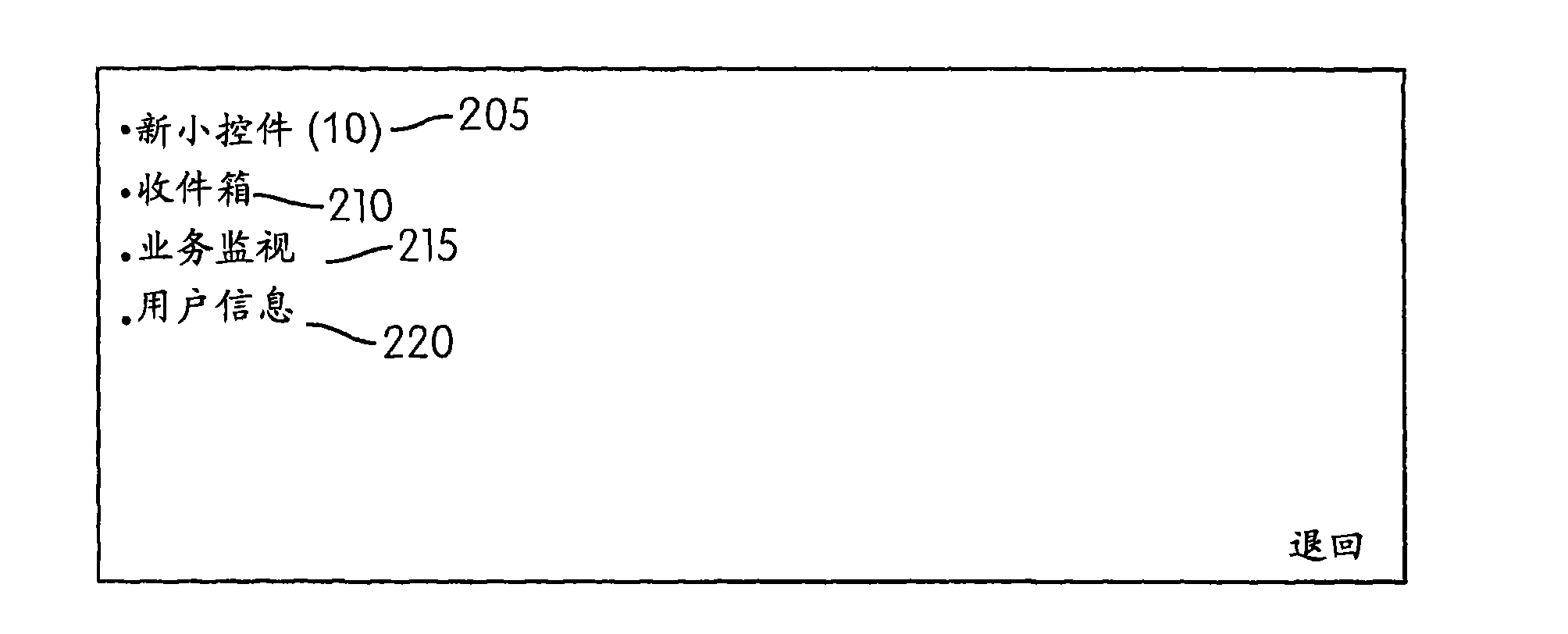System and method for managing and using electronic widgets
A small control and user-friendly technology, applied to electrical components, input/output process of data processing, hardware monitoring, etc., can solve problems such as personal network access fees
- Summary
- Abstract
- Description
- Claims
- Application Information
AI Technical Summary
Problems solved by technology
Method used
Image
Examples
Embodiment Construction
[0027] In the following description of various embodiments, reference is made to the accompanying drawings which form a part hereof, and which show by way of example various embodiments in which the invention may be practiced. It is to be understood that other embodiments may be utilized and structural and functional modifications may be made without departing from the scope and spirit of the present invention.
[0028] figure 1 A user interface for managing widgets and groups of widgets on a communication device such as a mobile terminal such as a Personal Data Assistant (PDA) is illustrated. A widget, as used herein, refers to an interface unit and / or application that provides and communicates information, such as advertisements, weather information, or other defined information, from one or more content sources based on various factors. User interface 100 may include various options 105, such as widget 105a, client 105b, mode option 105d, and exit option 105c. Options 105...
PUM
 Login to View More
Login to View More Abstract
Description
Claims
Application Information
 Login to View More
Login to View More - R&D
- Intellectual Property
- Life Sciences
- Materials
- Tech Scout
- Unparalleled Data Quality
- Higher Quality Content
- 60% Fewer Hallucinations
Browse by: Latest US Patents, China's latest patents, Technical Efficacy Thesaurus, Application Domain, Technology Topic, Popular Technical Reports.
© 2025 PatSnap. All rights reserved.Legal|Privacy policy|Modern Slavery Act Transparency Statement|Sitemap|About US| Contact US: help@patsnap.com



